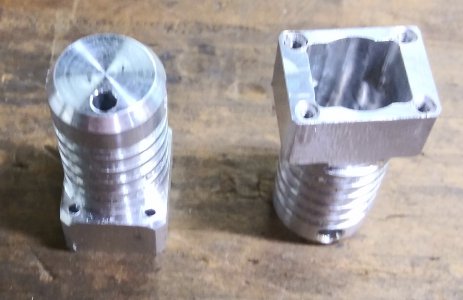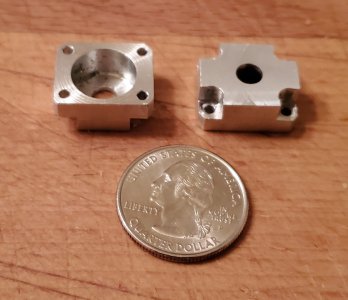- Joined
- Apr 29, 2019
- Messages
- 2,060
ONE DONE!!!!!!
Machining this part was an ordeal to say the least. But the first part is now finished (at least for this setup). One more setup to go to drill a cross hole at the small end. That should be quick and easy.
But before I tear down this setup I will make the other housing. Hopefully with no drama.
This Pic is with the motor and gearbox slid into place along side the next part that has had all of the exterior turning finished.
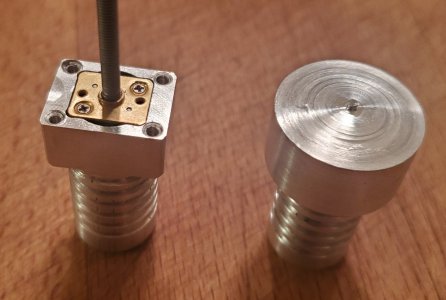
This pic is a top view to show the internal machining and those pesky M2 holes. The motor gearbox is along side for comparison to the internal machining. You can see the offset hole at the bottom where the motor wires will come in. There is plenty of room at the bottom for the motor terminals, wiring, and a filter capacitor.
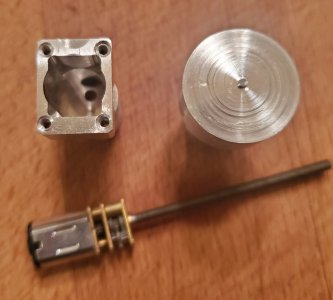
Side view of all the parts. The surface finish does not look as bad as this lighting angle makes it look. Odds are that if you are looking at this on a computer that the image on your screen is way bigger than the parts are, this housing is only 1.375 long and the round finned part is .620 Dia.
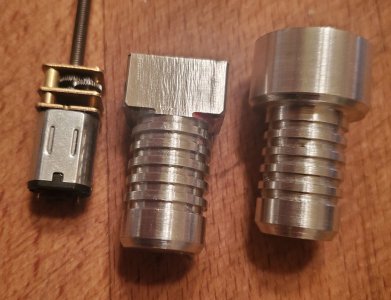
Machining this part was an ordeal to say the least. But the first part is now finished (at least for this setup). One more setup to go to drill a cross hole at the small end. That should be quick and easy.
But before I tear down this setup I will make the other housing. Hopefully with no drama.
This Pic is with the motor and gearbox slid into place along side the next part that has had all of the exterior turning finished.

This pic is a top view to show the internal machining and those pesky M2 holes. The motor gearbox is along side for comparison to the internal machining. You can see the offset hole at the bottom where the motor wires will come in. There is plenty of room at the bottom for the motor terminals, wiring, and a filter capacitor.

Side view of all the parts. The surface finish does not look as bad as this lighting angle makes it look. Odds are that if you are looking at this on a computer that the image on your screen is way bigger than the parts are, this housing is only 1.375 long and the round finned part is .620 Dia.

Last edited:


